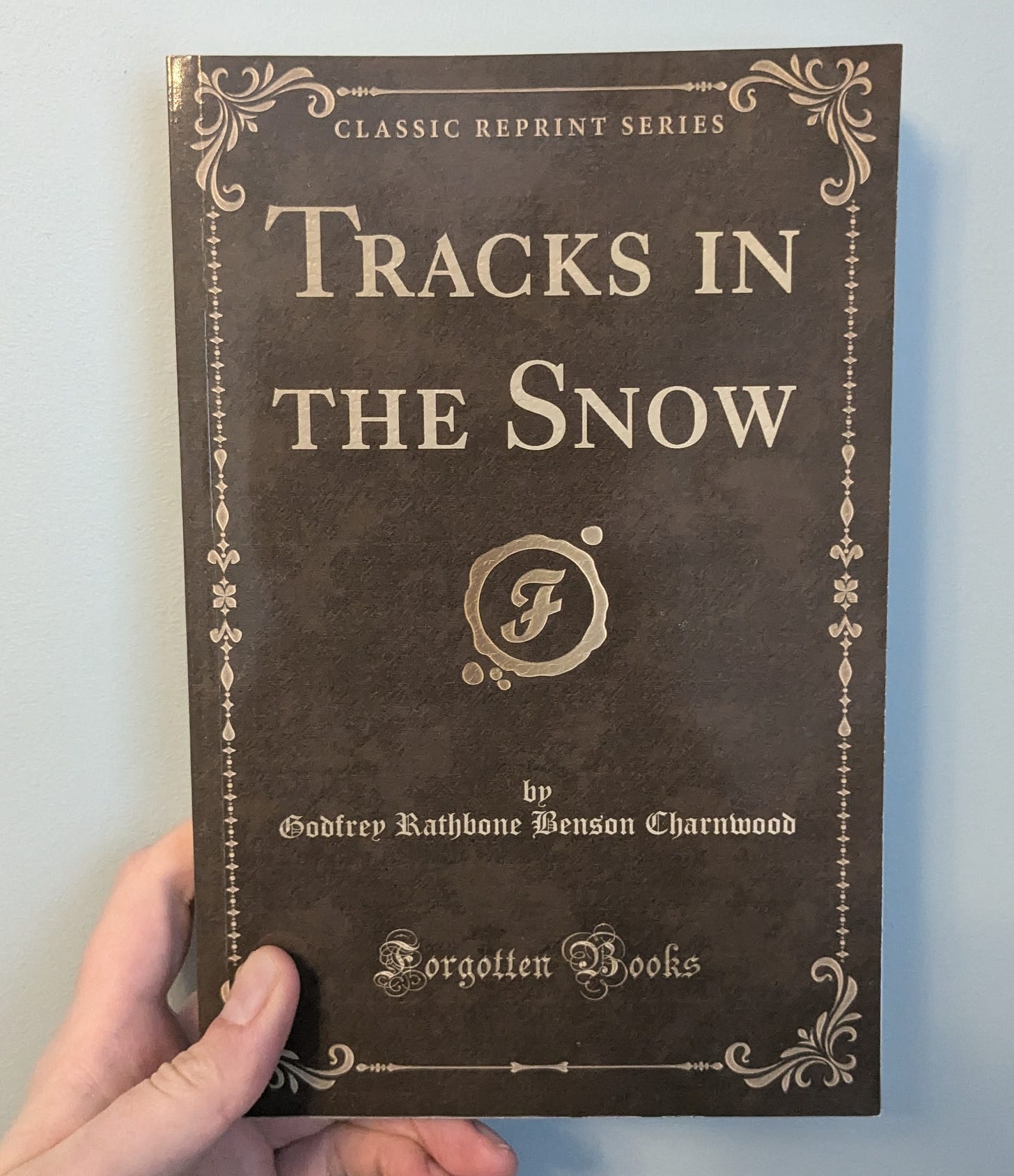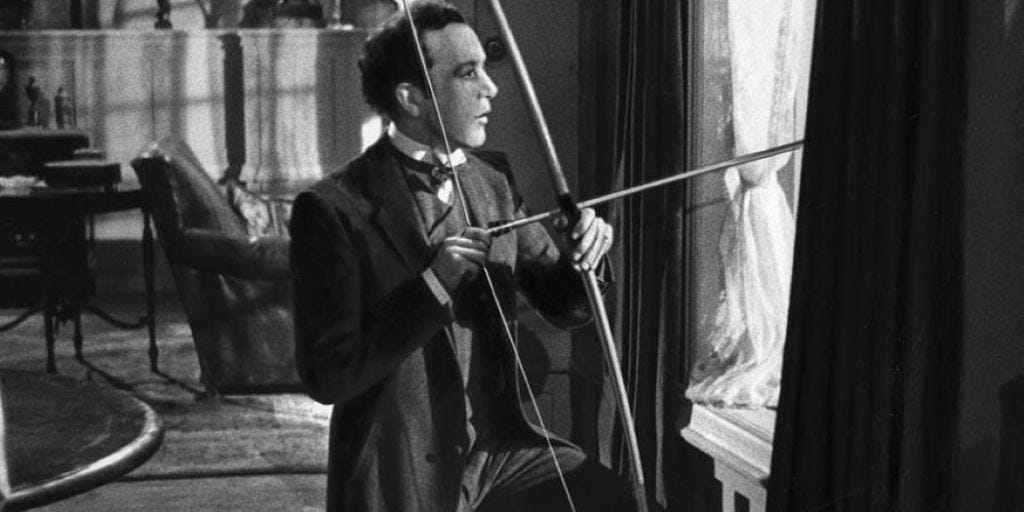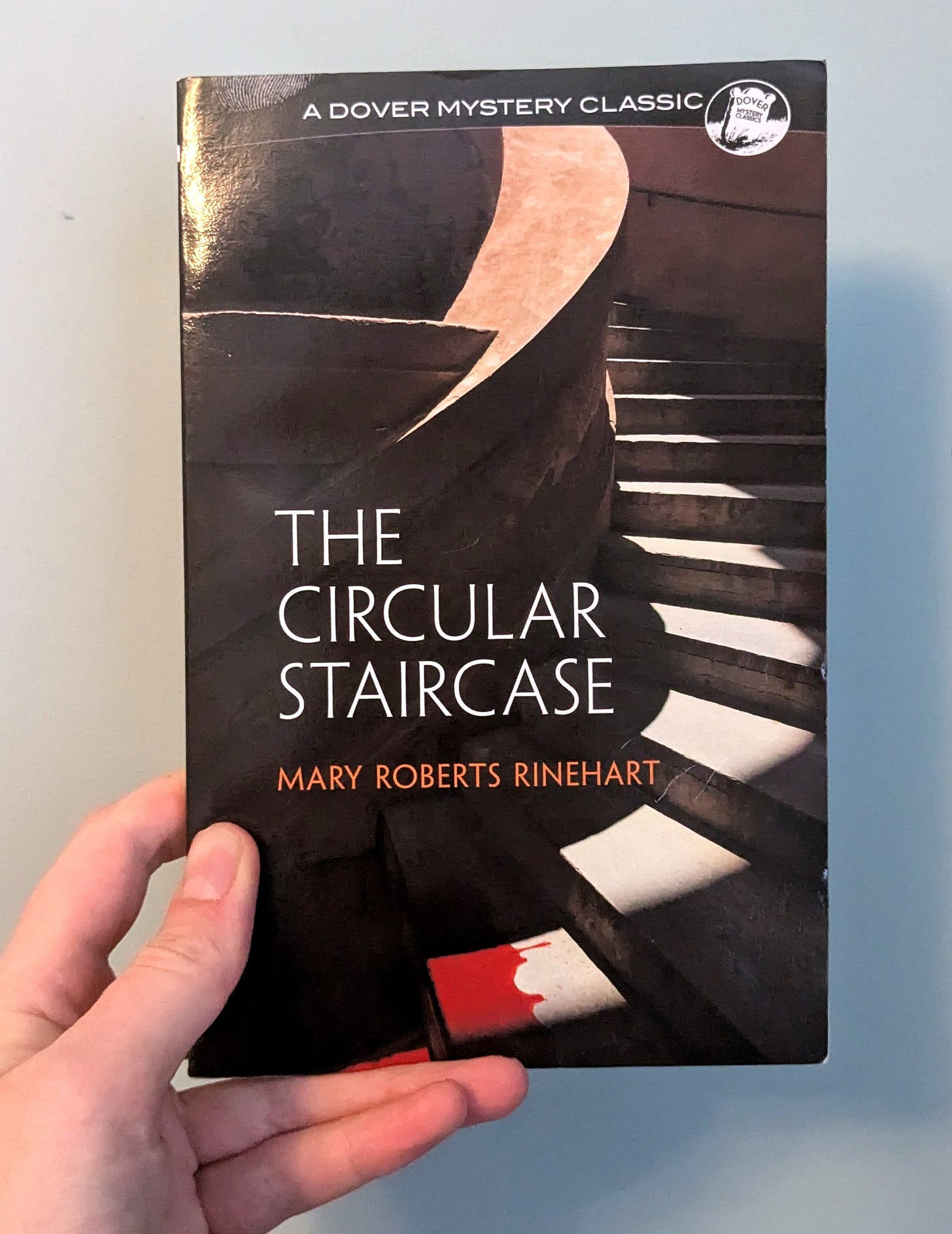I’m slowly making progress with my long-term goal of reading one crime novel from each year of the 20th century, in order. You can read the first two instalments here and here. And you can keep reading this page to discover which 1906, 1907 and 1908 books I’ve been perusing.
1906: Tracks in the Snow (Godfrey Benson)
I selected this book due to its appearance in the excellent Martin Edwards guide The Story of Classic Crime in 100 Books, where it is introduced with the words: “Godfrey Benson enjoyed a career of distinction before and after making a solitary venture into crime fiction.” Perhaps that statement should have lowered my expectations for this mediocre offering.
Tracks in the Snow has a clerical narrator, Robert Driver, who is invited to a dinner party at the home of Eustace Peters. This ends up being the host’s final evening of existence, and Driver becomes involved in investigating his friend’s fate. As the title suggests, footprints in the snow are a key part of this investigation. Driver also needs to uncover the truth about some past events in the characters’ lives overseas, which leads to a shout-out for the Society for the Propagation of the Gospel.
This mystery was written at a low-point in Godfrey Rathbone Benson’s political career. He had served as an MP from 1892—1895, but was then defeated in the 1895, 1900 and 1906 general elections. Five years after the book was published, Benson’s fortunes reversed and he became Lord Charnwood. Under this title, he produced a highly-regarded biography of Abraham Lincoln. He didn’t attempt a return to detective fiction.
Tracks in the Snow has a promising start, but then becomes a very slow, meandering and, at points, confusing novel. But there are some memorable lines scattered throughout: “It is a serious matter for a father of a family to enter into intimate relations with a gentleman who, according to an eminent specialist, is a homicidal lunatic.” Wise advice.
Verdict: ⭐⭐ (2/5)
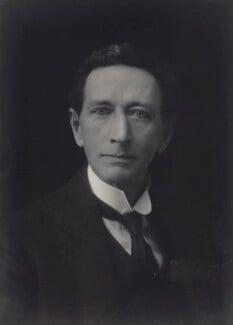
1907: Israel Rank (Roy Horniman)
A few years ago, I watched the excellent 1949 Ealing comedy Kind Hearts and Coronets, which follows the exploits of Louis D'Ascoyne Mazzini, who decides to murder the eight people ahead of him in a dukedom’s line of succession. The film is loosely based on the novel Israel Rank by Roy Horniman, which has the subtitle, “The Autobiography of a Criminal”. However, this is very much a case of the film being better than the book — and by a long way.
The film departed in a few significant ways from Horniman’s narrative. Most obviously, as the title suggests, the original murderer is Jewish. Israel Rank has a ruthless desire for significance, fuelled partly by his rejection by others. In his words, “a Semitic appearance, however superior, is not the best recommendation to society.” It seems that Horniman’s aim is to satirically expose and condemn the antisemitism of his contemporaries. But, to be honest, antisemites would love a lot of this book, which ends up propagating horrific stereotypes of parasitism and greed.
The other key departure was the film’s decision to turn the narrative into a comedy. The original novel is a far more disturbing read. In the film, there is humour in the murder methods. In the book, we see someone being burned alive and a child being intentionally infected with scarlet fever. I will concede that Horniman gives us a good ending, but I couldn’t make it there without skipping a lot of pages.
TL;DR — Avoid the book. Watch the film.
Verdict: ⭐ (1/5)
1908: The Circular Staircase (Mary Roberts Rinehart)
“This is the story of how a middle-aged spinster lost her mind, deserted her domestic gods in the city, took a furnished house for the summer out of town, and found herself involved in one of those mysterious crimes that keep our newspapers and detective agencies happy and prosperous.” So begins The Circular Staircase, a pioneering work in the “had I but known” subgenre of mysteries.
Mary Roberts Rinehart started writing to fill a financial hole after her family lost thousands of dollars in the stock market. Beginning with poetry and short stories, The Circular Staircase became her first published novel in 1908. When they saw the manuscript, her publisher said they read it “not only with pleasure but with thrills and chills”.1 To add to the rhyme, I also read it near some windowsills.
Rinehart creates an intriguingly mysterious atmosphere, featuring various strange happenings, including the discovery of a dead body at the bottom of the titular staircase. Her ominous references to coming events set the pattern for future “had I but known” mysteries, with statements like: “If we had only stuck to that decision and gone back, before it was too late.”
As I read, I found myself comparing this with my favourite “HIBK” author, Ethel Lina White. The Circular Staircase does not have the same consistent sense of tension as the White novels I’ve read, and I felt less invested in the mystery. But overall, this remains an important book that’s still worth reading.
Verdict: ⭐⭐⭐ (3/5)
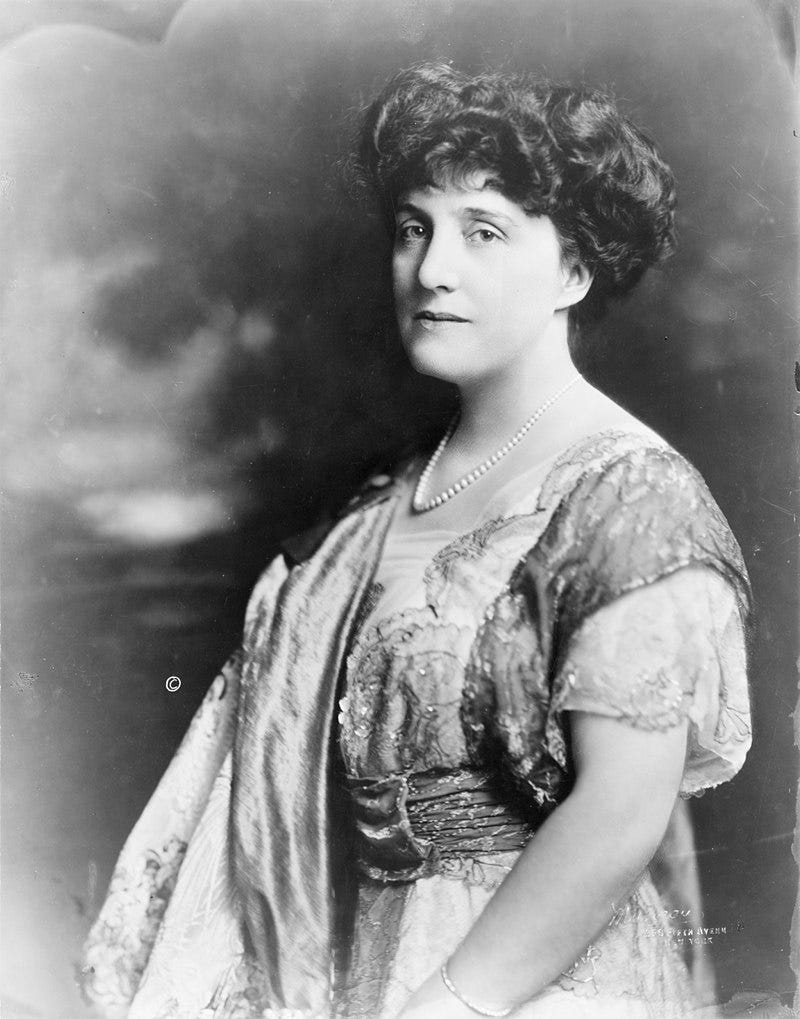
My next reads will be Arsène Lupin by Edgar Jepson and Maurice Leblanc (1909), At the Villa Rose by AEW Mason (1910) and The Eye of Osiris by R. Austin Freeman (1911). Recommendations for 1912—1914 welcome!
Quoted in the introduction to the Dover Mystery Classics edition, by Douglas G. Greene.




